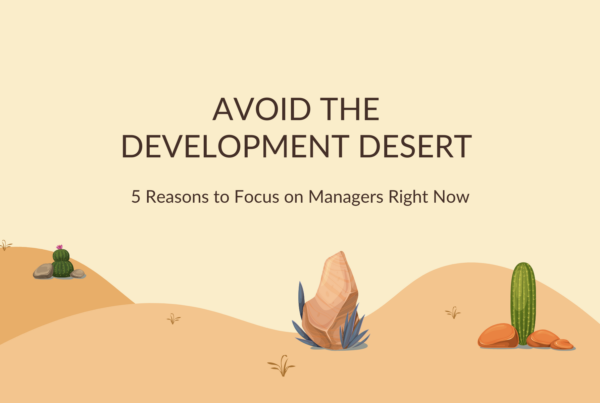December is one of the busiest times of the year. Holidays. Travel. End of year financials. You’re running non-stop to get everything done before the calendar flips to 2019, and it’s difficult to carve out time to set professional and career goals for the year ahead. But, don’t let it fall to the wayside. Reflection and a bit of forward-thinking can transform not only what you achieve in the New Year, but how you approach your efforts.
Come January 1, it’s back to the grindstone. A full inbox. An overflowing voicemail. You’ll be extremely busy as the new year kicks off, so making time to set goals will be difficult (and for many managers, it just doesn’t happen).
If you do find time to set goals early in 2019, they’re more likely to be reactive to your schedule than forward thinking. Setting leadership goals for your career before the holidays has the benefit of several weeks during which you can reflect and make sure it fits your vision and purpose.
So let’s dive in now and set our goals before the hectic start of the next quarter. Here are some tips on how to set yourself up for success in 2019.
Setting SMART Goals to Articulate Your Vision
To set actionable goals, you should fully understand your purpose and role within the organization. Why are you setting these goals and what do they help you to achieve within your role? For every goal you create, ask yourself:
- Why is this important to me?
- Why am I willing to make sacrifices to make it a reality?
In addition to clarifying your “why,” it’s important to make sure your goals are SMART: Specific, Measurable, Achievable, Realistic, and Time-bound. There’s no right or wrong way to do this. Goals are a very personal endeavor, so the specific SMART goals you set will vary depending on your vision, which is in turn defined by your values.
To ensure your goals match your vision and reflect those values, take time to define both if you haven’t already done so. As simple as this might seem, it’s often overlooked. The result is a set of professional goals that reflect what the organization is trying to do rather than what you want to achieve as a leader.
To ensure this doesn’t happen to you, start by:
- Identifying Core Values – What are your personal values and how do they relate to the company’s mission and values?
- Defining Your Vision – When you know your core values and have ensured they are compatible with your beliefs, you can define your vision for your team.
- Setting Clear Goals – With your vision set, set actionable goals that allow you to bring your company more in line with that vision. If you strongly believe in work-life balance, for example, set goals around limiting pre- and post-work communications and building a system at work to encourage healthy work habits for your team.
Setting HARD Goals and Growing as a Leader
Successful leaders in senior positions can easily fall into a pattern of routine. They know what works and what doesn’t. When your schedule is packed from morning to night, it’s easy to get distracted and fail to step back and make sure you’re really pushing yourself to do new things and achieve aspirational goals.
For rising and senior leaders who fall into this pattern, it’s important to set new goals that specifically push beyond those comfortable zones and routines. Try new things. Make mistakes. Get feedback from your team. Grow as a person and as a leader by pushing yourself throughout the year ahead.
This is where HARD goals come in – those that are Heartfelt, Animated, Required and Difficult. By definition these goals will push you outside your comfort zone and toward what you’re truly passionate about.
This might include learning and trying new things that you haven’t yet had time to do. Or addressing challenges that felt too big and complicated to tackle in the past.
Reread your performance reviews from the past year, take a direct report to lunch and ask for feedback, provide an anonymous way for your team to give feedback, read a new leadership book, get a leadership coach – these are all ways you can expand your perspectives and gain new experience that helps you develop as a leader.
In the next month, spend some time evaluating where you’ve been, where you would like to be a year from now, and how you will get there. By reflecting on what matters most to you and what type of leader you want to become, you can set representative goals that will push you consistently forward in 2019.
Download our editable Leadership Development Plan to set goals for your team or yourself.



